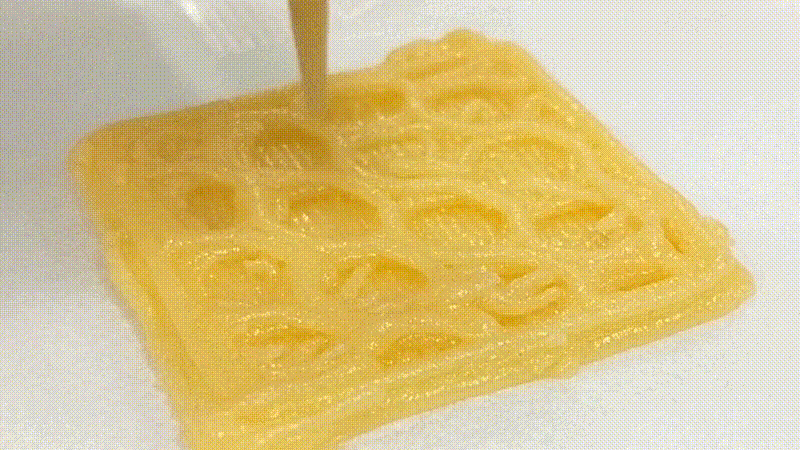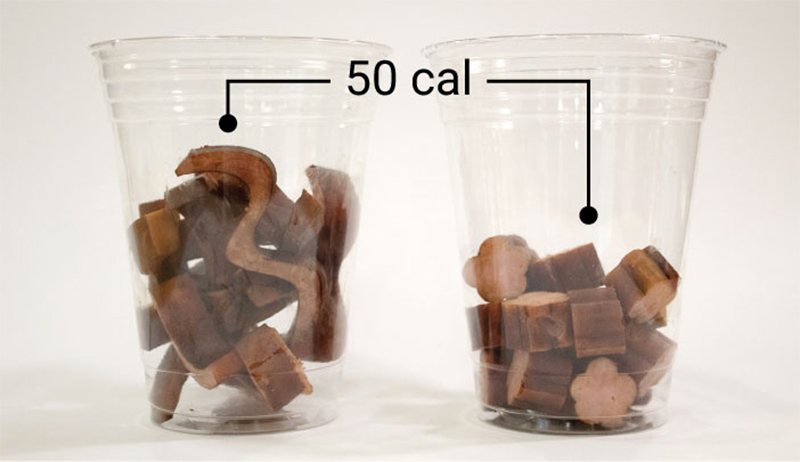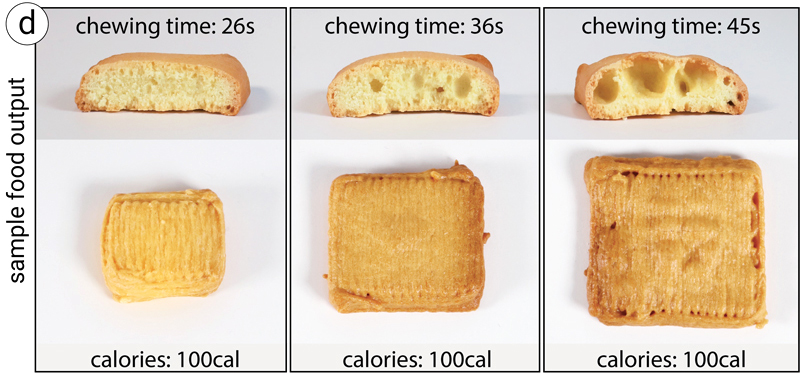
HCIE, a human-computer interaction development team under CSAIL at MIT’s artificial intelligence research institute, changed the shape and size of food and investigated the feeling of satiety based on research on how humans eat and their fullness.
The eater’s hunger levels depend on the texture and hardness of the food. For example, you can see that the amount of one meal decreases because the number of times you chew an object increases. The research team applied this to review the finished food baked in an oven and toaster in the internal structure itself using a 3D printer that changed the nozzle to handle non-plastic food.


In the taste test experiment, 30 subjects were asked to eat various 3D-printed foods by attaching a myoelectric sensor to their face to check the chewing time and chewing power. After I finished eating, I proceeded with the evaluation. Galwa said that there were many people who answered that the larger the size of the more complex structure had higher hunger levels. Based on this, the research team developed a computer model and system, FoodFab, which can automatically create customized foods according to user needs and tastes.
3D printed food can freely change its structure and maintain fullness while limiting quantity and calories. Even when you don’t eat a lot due to diseases, etc., you can make it easier to eat with a softer structure, and you can take as much calories as possible with a small amount. Related information can be found here .


















Add comment